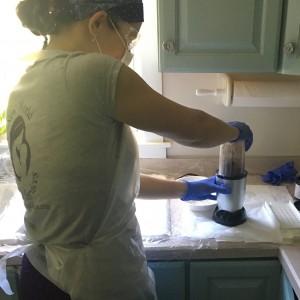This is not a blog to convince you to eat your placenta. But maybe you are placenta curious…
More and more people are starting to become curious about placentophagy and options for consumption. But what about the proof that it is actually worth doing?
Some are drawn to placenta encapsulation because it is a “natural” way to aid recovery after birth, and possibly improve milk production and overall mood. One truth we are transparent about is that “natural” does not mean “without risk.”
Understanding the risks that are a part of placenta encapsulation are what make informed clients informed clients. But also, understanding risks does not make a choice inherently “risky.”
What should be understood about the process of turning your placenta into an aid for healing is that this organ is not fully understood. There have not been any conclusive scientific studies done to validate or invalidate the personal experiences others have shared about consuming their placenta.
One thing that is proven is that bacteria does indeed grow on a birthed placenta. And we have scientific proof about how to limit the growth of bacteria that can make us sick when products are consumed.
Taking precautions in line with the risks that are known about bacteria growth are suggested, and are a part of our standardized care.
Some simple things to consider and be vigilant to preserve:
- Before processing, your placenta should be kept at a safe temperature once it is born to reduce bacteria growth. The recommendation is to store it at 40 degrees or colder.
- Your placenta should be handled and respected as a source of blood. And where there is blood, there could be bloodborne pathogens. Using an encapsulator who is trained in protection from bloodborne pathogens and takes appropriate precautions in setting up and processing, is a very reasonable way to reduce unnecessary risk to yourself and others in your household.
- While processing, a placenta should be dried with an appropriate drying temperature and drying time, again to reduce the risk of bacteria growth. To reduce risk to our clients, we dehydrate at 160 degrees, for as long as is necessary for complete dryness to be reached.
- With very little scientific research to support the practice of placenta encapsulation, we want to ensure any benefits one hopes to reap are maximized. That means we give our clients information on storage and consumption and remain available for any questions that come up.
We value the experiences others have shared about placenta consumption and placenta encapsulation and are honored to provide this service to those who seek it out. We also recognize this profession is completely unregulated or monitored.
Until we have scientific proof for the benefits others have shared for generations, we will participate in ways that will keep our clients as safe as possible.
If you have more questions about our processing procedures or want to book services, please visit the contact page!
